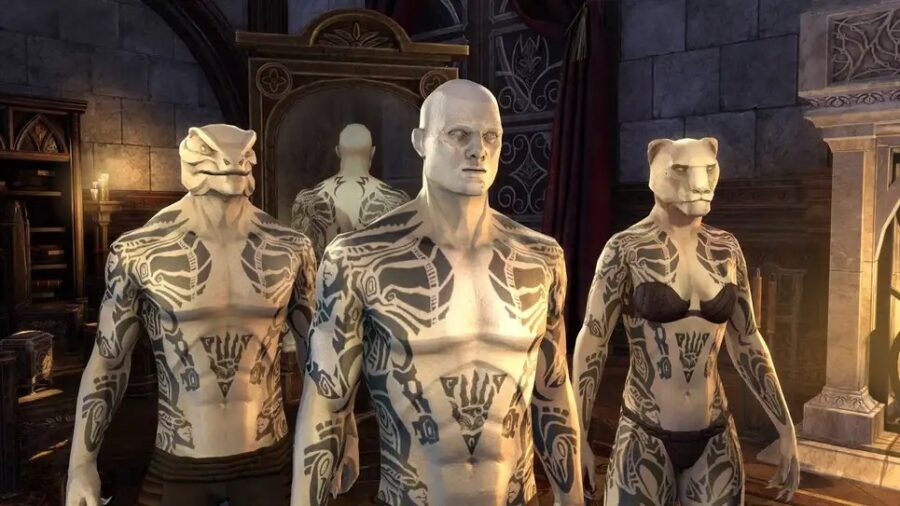Elder Scrolls Game Uses Fan Art Without Permission
Elder Scrolls Online allegedly used a fan artist's work to create a cosmetic item in the game without the artist's permission.

A piece of Elder Scrolls Online fan art made its way into the game without crediting the artist, and the gaming community is raining fire on the developers. It’s not uncommon to see gaming companies going after someone who infringes the copyrights—we had plenty of examples from Nintendo—but what happens when a gaming company does that to its fans? We’ll skip asking Capcom and go straight to ZeniMax.
According to Kotaku, artist Relan Daevath made some Elder Scrolls Online fan art which was subsequently posted on the artist’s Tumblr account. However, the fandom discovered that the company had used the fan art within the game without prior permission from the artist or proper credit. The art in question is actually a cosmetics item, Mercymother’s Body Art, which is actually available for purchase through the Crown Store. The skin is nearly identical to the piece of artwork previously posted on Tumblr.
Here’s what’s actually going on here. It seems possible that someone at ZeniMax —as many believed happened from the infamous case with Mick Gordon— copied and pasted the art while potentially relying on the company’s reputation as a deterrent for their copyright infringement. In the end, the copyright notice reads that all artwork related to Elder Scrolls Online is owned by ZeniMax.
There’s very little difference between the actual artwork and the skin within the Elder Scrolls Online—they’re so minute they’re practically negligible. The artist quickly turned the public eye towards what happened—prompting the fandom to backlash against ZeniMax. This resulted in ZeniMax releasing a statement acknowledging the situation with the fan art, stating that the company never intended to include any community fan art without proper credit.


ZeniMax also stated that the company had contacted the artist and would work with them to make sure that there was a proper resolution. Now, we’re not legal experts, but we firmly believe that mere credits won’t suffice; when someone’s making money from someone else’s work, monetary compensation is in order. But we’ll leave those wrinkles for those involved to iron out.
We’d like to point out that ZeniMax and its subsidiaries, such as Bethesda, have a reputation for shifting the blame and threatening legal action against those complaining about the company’s practices.
Ultimately, this isn’t an isolated case in gaming. Capcom was sued several times over incorporating third-party art without any permission, credits, or compensation to the respective artists—some art actually made it into the original Resident Evil 4, Devil May Cry, and the very successful Resident Evil: Village. It’s worth noting that this has encouraged certain artists to cry “wolf,” as was the case with a Call of Duty lawsuit from a famous wrestler.












